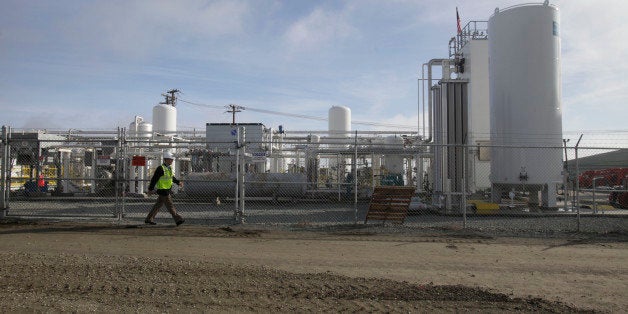
Combustion of natural gas is responsible for a quarter of California's carbon emissions. If we are going to achieve the 80 percent reduction in emissions proposed by state legislators in S.B. 32, we will need to think clearly about the role that natural gas plays now and the role that we envision for it in the future.
Natural gas today is primarily -- but not exclusively -- a fossil fuel. It mainly comes from fossil carbon stored in the earth's crust, just like coal and petroleum. It is used for electricity generation and also for heating our homes and hot water, cooking our food, and to generate heat for various manufacturing processes. However, gas is different from other fossil fuels in three important ways.
First, gas is not just a fossil fuel. Natural gas can also come from biogas, created from the decay of organic waste products in landfills, and from waste water, animal manure, and agricultural waste.
Second, gas can also be a means for storing and transporting renewable energy. As California ramps up its production of renewable electricity, we are challenged to find ways to move it from the time and place where it is produced to the time and place where it is needed. The technology to convert electricity into hydrogen and then into natural gas is straightforward, although further research is needed to make it commercially viable. The Southern California Gas Company, for example, has announced a pilot project with federal support, to convert up to 1 MW of solar power into natural gas.
Third, for many uses, there is no obvious substitute for gas. It is difficult to imagine a future in which we do not cook with gas, heat our homes with it, and continue to use it for many industrial purposes.
The solution is to recognize that, to some degree, gas will always be a part of our fuel mix, and -- as California has already done with electricity and transportation fuel -- it needs to develop a comprehensive strategy to make it fit with the deep carbon reductions that will be required.
Consider California's multi-pronged approach to reducing use of gasoline.
• Reduce Demand: By 2025, Pavley standards for cars will increase average fuel efficiency by 34 percent.
• Promote Alternative Technologies: The state provides generous incentives to consumers who buy electric cars and install charging stations for them.
•Decarbonize the Supply: The low carbon fuel standard (LCFS) requires a reduction in the carbon footprint of a gallon of gas by 10 percent by 2020, through increased use of biofuels and shifting suppliers to less carbon intensive sources of petroleum.
The state has taken a similar approach to electricity.
•Reduce Demand: California is a national leader in promoting efficient use of electricity through consumer and industrial incentives, building codes, and appliance standards.
•Promote Alternative Technologies: The California Solar Initiative directly subsidizes the installation of residential rooftop solar.
•Decarbonize the Supply: The state is on-target to achieve a renewable portfolio standard of 33 percent by 2020 and the governor has announced a goal to raise it to 50 percent by 2030.
California needs a similar comprehensive strategy for natural gas that includes the same elements as its approach to those other energy sources.
•Reduce Demand: This is a place where the state already shines. The state has strong programs already in place to weatherize homes, increase furnace and hot water efficiency, and reduce waste.
•Promote Alternative Technologies: California can do much more to remove barriers and support the development of biogas projects and get the gas into its network of pipelines. The state should approach biogas the way it approaches solar energy, with special incentives and laws that help to smooth the path for projects using this homegrown source of energy. We should also invest more in research on biogas production and improvements in our ability to convert electricity into gas.
•Decarbonize the Supply: As with electricity and vehicle fuel, California should have a program to drive down the carbon footprint of our supply of natural gas. The LCFS is a tremendous success, incentivizing innovative new transportation fuels at modest cost and without impacting supply. A renewable gas standard could have a similar impact on the gas supply, driving cleaner and more efficient gas production and creating incentives for biogas.
